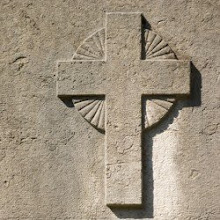From the words: “This is My body,” she [the Church] only gathers this: “This is Christ’s body;” and neither on the one hand that the bread is not His body, nor on the other that His body is given in, with, and under it. She acknowledges that the ecclesiastical (not Biblical) phrase “This bread is Christ’s body,” sets forth a truth, as the Church uses and understands it; and from a comparison of text with text, she knows that the bread is the medium by which, in which, with which, under which the body is imparted, but she reaches this by no reading out of the text what is in it, nor reading into it, what is no part of it; but by interpreting every word in that natural and proper sense, which is fixed by the laws of language. Our Saviour says, Take, and we take; He says, Eat, and we eat; He says: This (which He has just told us to take, eat) is My body, and we believe it. The affirmation is as literal as the command, and we believe the one as we obey the other, to the letter, no more understanding His affirmation to be, This is not My body, than we understand His command to be Do not take, Do not eat.
Charles Porterfield Krauth, The Conservative Reformation and Its Theology, (St. Louis: CPH, 2007) 610.







No comments:
Post a Comment